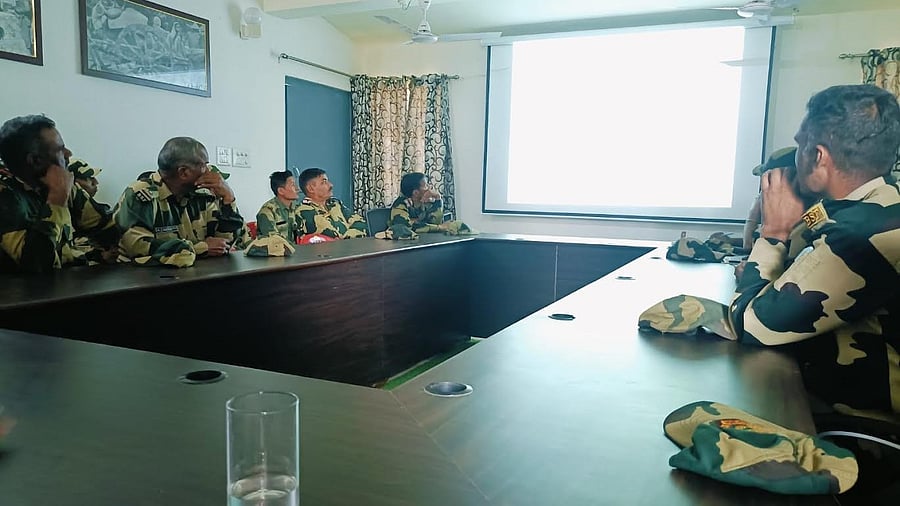
During a training to a group of BSF personnel at Kilapara on February 7.
Credit: Aaranyak NGO, Guwahati
Guwahati: Not just illegal migrants and cross border criminals, BSF personnel manning the 10kms stretch of the Indo-Bangladesh border at Dalu in Meghalaya are also grappling with an unusually growing challenge: wild elephants.
Although the problem is not new, severity of this has increased mainly in view of alleged torture by farmers in the adjoining Sherpur district in Bangladesh, who chase away herds of wild elephants in order to protect their crops.
"As they (farmers in Sherpur) adopt many means to chase away the elephants, the jumbo problem has increased. Many times, our personnel engaged in patrolling in the jungles along the border find no option but to flee in order to avoid conflict. One sub-inspector was killed a few months ago and another was seriously injured. The problem is increasing," Simha Chalam, a BSF inspector posted at Kilapara camp at Dalu, told DH on Tuesday. Simha Chalam hails from Andhra Pradesh.
Dalu is a plain village in Meghalaya's West Garo Hills district and is surrounded by hills and jungles in East and South Garo Hills. "Elephants often come to the plains in search of food and water," he said.
Meghalaya shares 443kms of India's 4,096km border with Bangladesh. A herd of 30 to 40 elephants frequent the area and cross the border through the unfenced stretches, often resulting in confrontation with the BSF personnel and local residents.
"The problem increased after the fencing was put up following the birth of Bangladesh (1971) or before. The fencing created a hindrance for the jumbos. Destruction of forests and growing instances of torture by farmers in the adjoining Bangladesh district seems to have increased the human-elephant conflict in the past few years," said Hiten K Baishya, deputy head of Elephant Research and Conservation Division of Aaryanak, a biodiversity conservation NGO in Assam. Baishya provided training to a group of BSF personnel at Kilapara on February 7. The training was organised by the forest division in East and West Garo Hills with the help of Aaranyak and BSF.
"Most of the BSF personnel hail from states like Punjab and Rajasthan, where wild elephant problem is almost nil. So they are not aware of how to tackle the human-elephant conflicts. So we tried to apprise them with behaviour of the wild elephants and some small measures that can reduce or avoid such conflict," Baishya said.
"Our experts tried to provide them tips like use of chilli and tobacco smoke as deterrents, use of trench and low cost solar fence, use of lights and watch towers in vulnerable areas, besides putting up signages to create awareness can be helpful," Baishya said.
Human-elephant conflict has become a serious concern in Assam, Meghalaya and a few other states in the Northeast. Many people have died while several elephants are also killed by villagers in retaliation.